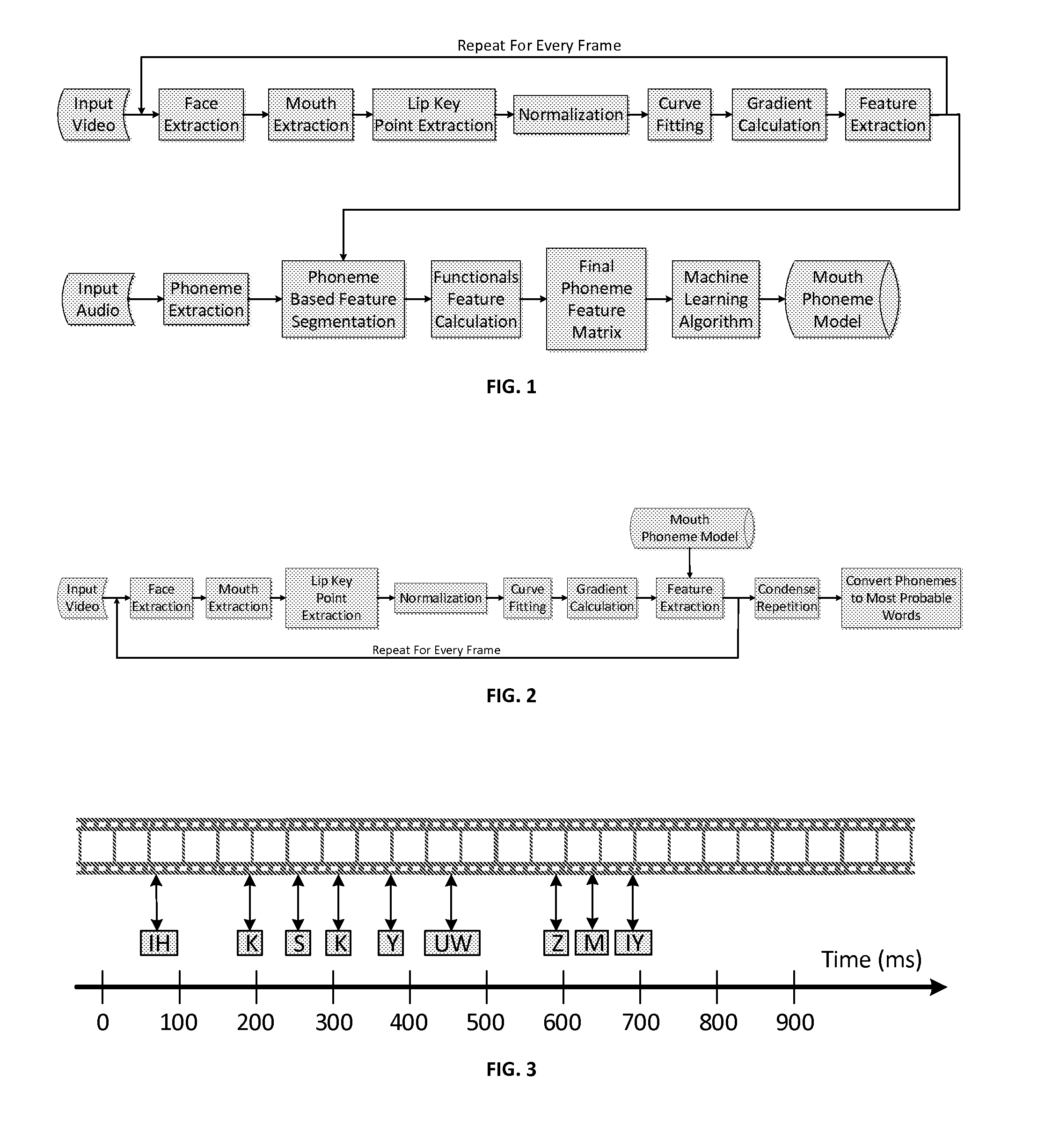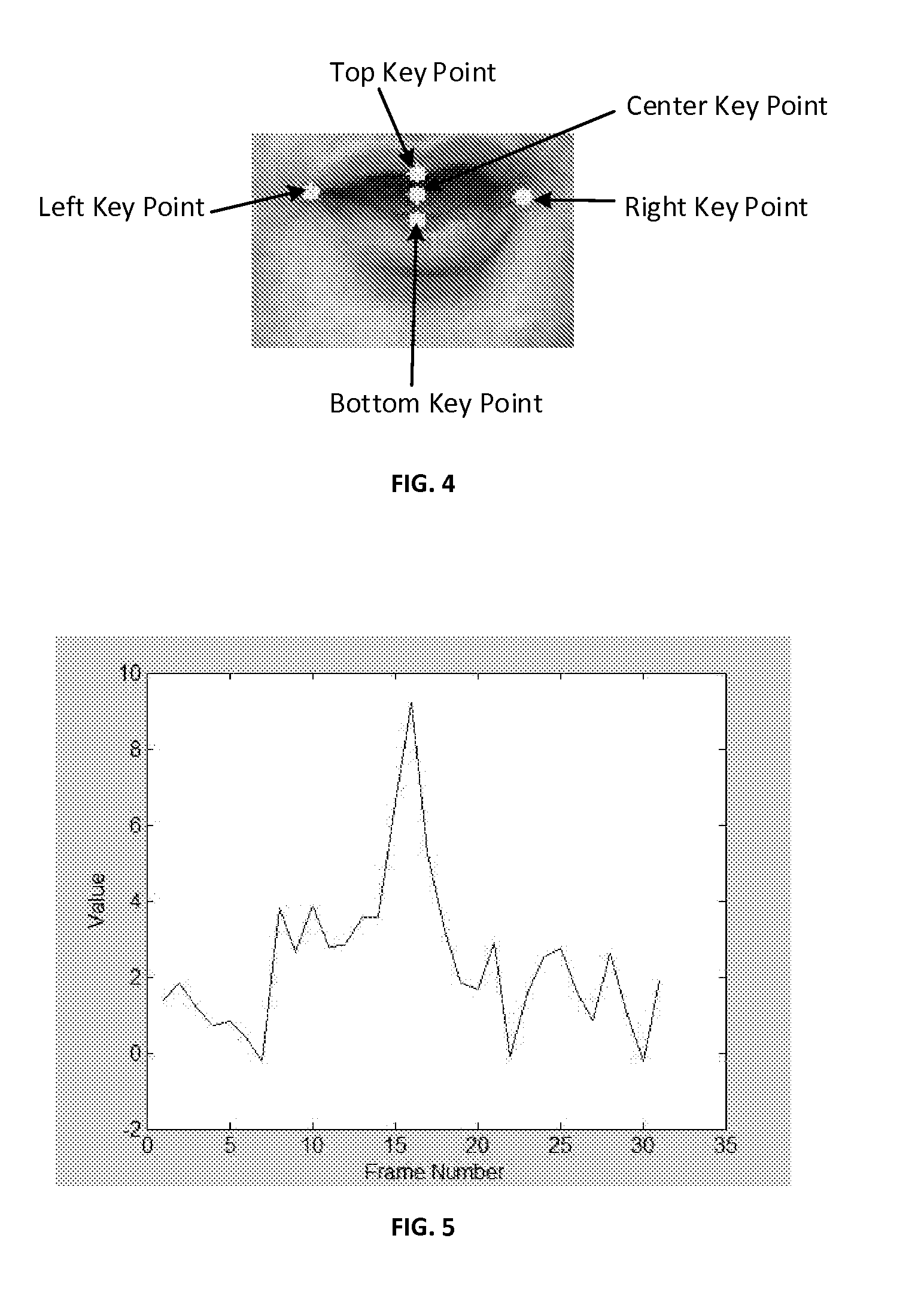Mouth-Phoneme Model for Computerized Lip Reading
a computerized lip and phoneme technology, applied in the field of mouthphoneme model for computerized lip reading, can solve the problems of degraded performance of audio-based speech recognition systems, human lip reading is only 32% accurate, and human lip reading is difficult to achiev
- Summary
- Abstract
- Description
- Claims
- Application Information
AI Technical Summary
Benefits of technology
Problems solved by technology
Method used
Image
Examples
Embodiment Construction
[0018]FIG. 1 illustrates the training process of the lip reading system, which involves inputting a video from a camera, followed by detecting the speaker's mouth, and eventually a series of features are extracted from the speaker's mouth ROI. This process is repeated for every frame, and once complete, audio data from the same video is extracted. A mouth-phoneme model is created by relating the visual characteristics of the speaker's mouth with the corresponding spoken phonemes.
[0019]The first step of the lip reading algorithm involved breaking videos from input video into individual frames, essentially images played over time. Within each individual frame, the speaker's face was detected using a face classifier, a standard image processing method. Once the speaker's face had been identified, a mouth classifier was used to identify the mouth region of interest (ROI).
[0020]The mouth region of interest includes both desirable and undesirable information. In order to better distinguis...
PUM
 Login to View More
Login to View More Abstract
Description
Claims
Application Information
 Login to View More
Login to View More - R&D
- Intellectual Property
- Life Sciences
- Materials
- Tech Scout
- Unparalleled Data Quality
- Higher Quality Content
- 60% Fewer Hallucinations
Browse by: Latest US Patents, China's latest patents, Technical Efficacy Thesaurus, Application Domain, Technology Topic, Popular Technical Reports.
© 2025 PatSnap. All rights reserved.Legal|Privacy policy|Modern Slavery Act Transparency Statement|Sitemap|About US| Contact US: help@patsnap.com



